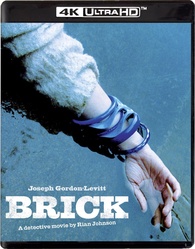Quote:
Originally Posted by nissling

Films are never "scanned in HDR", just like digital cameras don't "record in HDR". Most scanners use either a linear or logarithmic response curve to properly maintain the dynamic range of the film. On negatives this is actually fairly easy thanks to Kodak Cineon Log, which makes it fully possible to properly emulate the tone curve of a negative in the digital domain and can be fully handled in just about any color grading system (Resolve, Nucoda, Baselight etc).
|
My point is that when you do a 4K master, you can select whether to output it in SDR or HDR format. If selecting to use SDR instead of HDR, the max brightness level that can be represented is lower.
The film negative scanning is just a part of the process (and it's N/A for digital recording).
(And I know you are already familiar with all of this, I'm just clarifying the point I'm trying to make.)
Quote:
Originally Posted by nissling

I don't like to generelize. I've never said there is a problem with high peaks nor high averages, although much of the impact of HDR is clearly being lost if peaks and averages are high all the time. It's similar to the way loudness war works.
Out of all the thousands of films I've scanned and worked on, I've done maybe a handful of complete restorations in HDR (considering how small the market is we can only justify doing it on very select titles). I always use an existing reference to get an idea how it originally looked (most of the time an archived print as long as it's in a usable state) and aim to maintain a similar average luminance level and let the highlights get as bright as I need them to. Examples below from a film I restored last year (B/w 35mm negative, mid 50s).
Average is at 10 nits but peak is still kind of low. I decided to not make the lamp too bright as it would end up looking to distracting.
[Show spoiler]
This one is perhaps more clear. Averages is at around 10 nits which is perfectly fine but the peak is very obvious, both at its luminance level as well as how much of the image it takes up (this scene has a torture sequence where the guards use extremely bright lights on a prisoner).
[Show spoiler]
I prefer to do HDR grades that are reserved, where the peaks are clearly visible without overbrightening the entire image. Some studios seem to stick to this way of doing their grades, like Warner Brothers, while others are far more into torch grades (though it has gotten way better in the last four or five years).
SDR is relying on power law EOTF, which is essentially only emulating the transfer curve of a CRT and works in a fully relative manner. HDR puts it aside completely and relies on nominal values. This is crucial for creative intent as the image can always be delivered with the proper light levels to the end user. Not to mention, you are never limited by the container itself and can make the image as bright as it needs to be without introducing any clipping. For a colorist, this plays a big role. |
What it boils down to is whether you think SDR is sufficient to represent whatever video you intend to represent. Surely, SDR is nowhere close to being able to represent reality as we view it with our eyes at least. Not even HDR is, but it's closer.
You can of course argue that there is always the creator's intent. For example perhaps the director doesn't want it to look bright, not even the frame average brightness in any of the scenes, regardless if shot under very bright conditions. That's totally fine. But then we're no longer talking about representing reality as accurately as possible. It can even be e.g. black & white, and then no color is needed.
So in the case of Triangle of Sadness, let's assume the intent was to represent reality as close as possible. Would the max frame average, frame average, and/or peak brightness then be higher than the SDR edition, if HDR had been used throughout when recording and producing the 4K master? At least for parts of the movie? After all, several scenes are shot under bright daylight conditions and some e.g. on open sea. So there ought to be some scenes with quite high frame average brightness and specular highlight brightness.
If you think the max frame average, frame average, and/or peak brightness would be higher if HDR had been used, then I take it your complaint is more about how the SDR-to-HDR conversion has been applied in the German HDR edition? E.g. perhaps the peak brightness
should be higher than the SDR edition, but the German HDR edition boosted it too much, or applied it in the wrong places?







































































































































































































































































































 Linear Mode
Linear Mode

